
Bruner's interest in the process of how children form concepts led him to extend Piaget and Vygotsky's thinking. His main focus was on:
- The importance of culture, social interaction, language and external resources as the media of cognitive development.
- The role adults play in children's learning (for example, creating the conditions for learning; in supporting thinking and problem-solving)
- Scaffolding: how adults can support children to extend their skills and become independent
- School curricula (for example, the spiral curriculum: based on children's need to reinforce understanding by revisiting concepts previously learned.)
(Lindon, 2010; Tilstone and Layton, 2004)
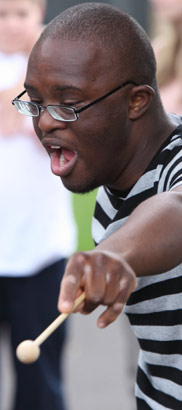
Bruner proposed three modes (each with four stages) used for representing and organising knowledge:
Enactive mode The child understands the world by physically interacting with it (0-18 months)
Iconic mode The child begins to develop sensory memory and can learn from sensory presentation, for example, pictures. (from 18 months)
Symbolic mode Knowledge and thought are represented as words, mathematical symbols, etc. (six-seven years)
The modes do not represent a progression, and earlier modes of representation may be selected by a child. (Conway, 2007)
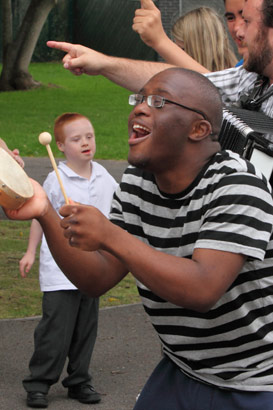
Associated with these modes, Bruner conceived of amplifiers that extend the human ability to act:
- Amplifiers of human motor capacity: for example, tools for everyday human activities (cutlery, weapons, writing implements, computer mouse)
- Amplifiers of human sensory capacity: tools that enhance or extend sensory experience (loud hailers, magnifying glasses, radars)
- Amplifiers of symbolic thought: tools such as language systems and theories
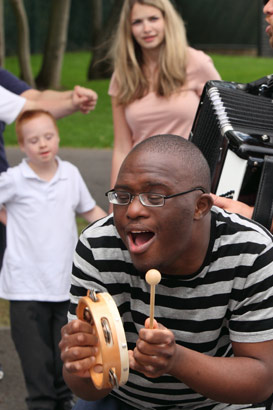
Scaffolding takes place within the child's zone of proximal development (see Vygotsky). A more experienced adult or peer supports the extension of a child's skills, behaviour or performance by, for example:
- Directing attention;
- Guidance (for example, visual, verbal prompts, etc.);
- Setting sub-goals;
- Reviewing and adjusting performance and support.
Children adapt based on this guidance and finally become able to use the skill independently. They are able to regulate their own performance and behaviour without teacher support.

Bruner argued that in order to enable the transfer of thinking processes from one context to another, children needed to
learn the fundamental principles of subjects rather than just master facts.
General Teaching Council for England, 2006
Bruner advocated:
- Learning through inquiry/exploration, with the teacher providing guidance to accelerate children's thinking.
- Initially, teaching should allow the child to grasp basic ideas intuitively.
- Subsequently the curriculum should revisit the inquiry and repeatedly build upon basic ideas until the child fully understands them.
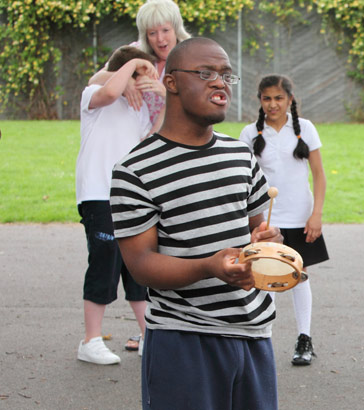
At the pre-verbal stage, Bruner identified these functions:
- Behaviour regulation: child acts to gain the attention of another to fulfil a need
- Social interaction: child acts to attract or keep another's attention as a social end in itself
- Joint attention: acts used to bring something to another's attention as an end in itself.
(Shumway and Wetherby, 2008)
The strong emphasis on communication in Bruner's theory naturally supports the notion of
Empowerment ... Research shows that for some children with special educational needs, patterns of non-verbal communication
can aid the development of spoken language ... For other children, these early patterns can pave the way for non-verbal communication
that is understood by a wider range of people, thus ultimately promoting empowerment and self-advocacy.
Tilstone and Layton, 2004
Construct a case study based upon a child with SLD/PMLD/CLDD whom you know, describing the ways that scaffolding has enabled increased independence in a specific area of their development.
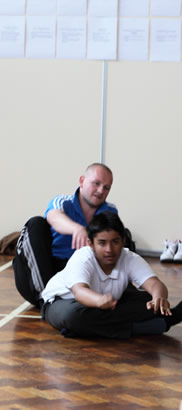
Tilstone and Layton (2004) describe practice with children with SLD and
PMLD which exemplifies Bruner's ideas, while not explicitly
based upon them.
In intensive interaction (Nind and Hewett, 2003), the adult provides the communicative structure (for example, the presence
of a receiver, taking the child's expressive events as interaction, turn-taking, etc.) within which interaction takes place,
so scaffolding the beginnings of communication.
In Sherborne Developmental Movement, the bodies of those supporting movement become a motoric 'amplifier' for children, enabling
them to experience different movements (Tilstone and Layton, 2004). Shared movement also becomes the scaffold for developing
interactive relationships (Hill, 2006; Marsden and Egerton, 2006).
more (1)

Pound, L. (2008) How Children Learn: From Montessori to Vygotsky – educational theories and approaches made easy. London: Step Forward Publishing.

Conway, T.R. (2007) 'Jerome Bruner'. In: J.L. Kincheloe, and R.A. Horn (eds) The Praeger Handbook of Education and
Psychology. Westport, CT: Praeger Publishers
NInd, M. and Hewett, D. (2003)A Practical Guide to Intensive Interaction. Kidderminster: British Institute of Learning Disabilities.

Marsden, E. and Egerton J. (eds) (2007) Moving with Research: Evidence-based practice in Sherborne Developmental Movement. Clent: Sunfield Publications.